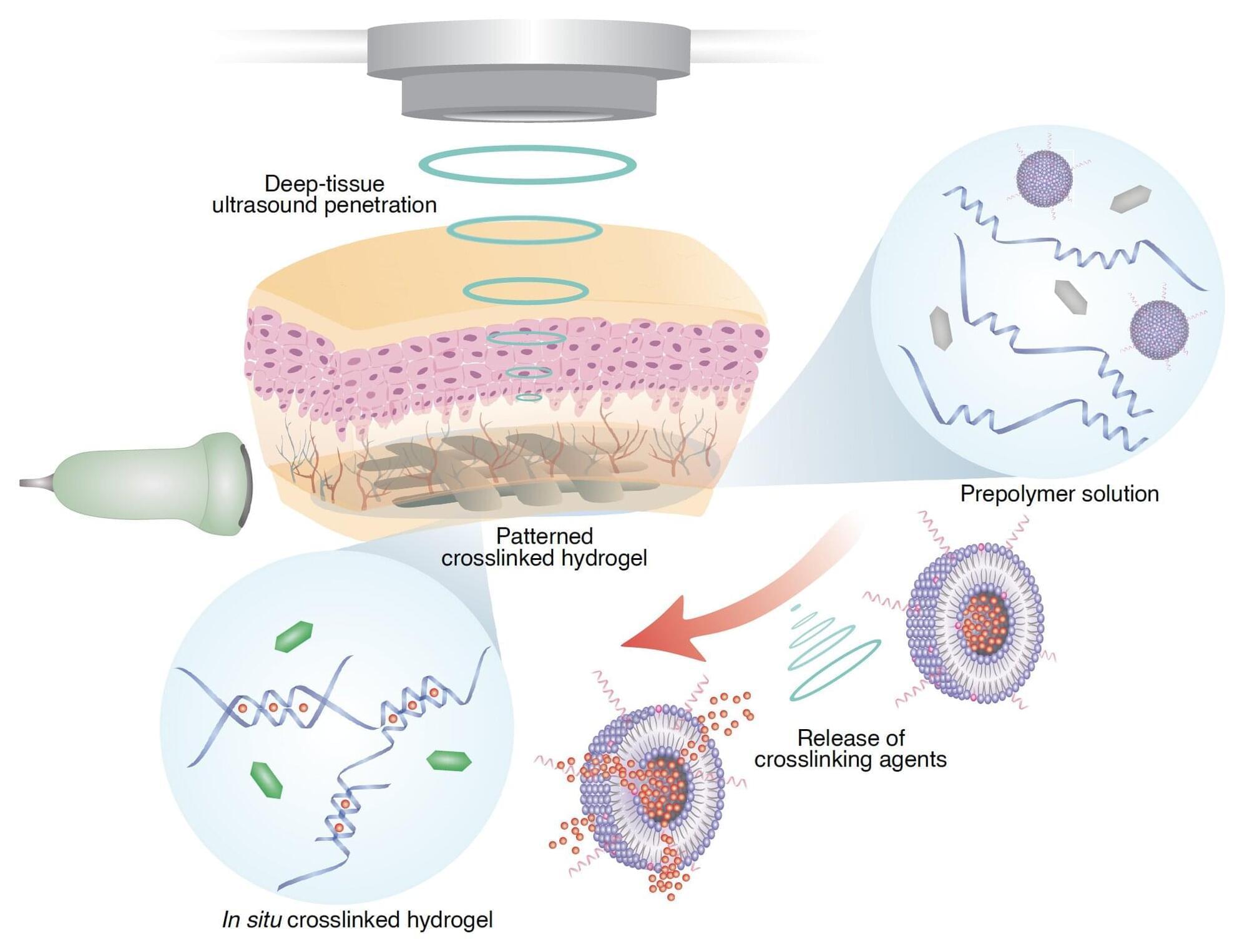Imagine that doctors could precisely print miniature capsules capable of delivering cells needed for tissue repair exactly where they are needed inside a beating heart.
A team of scientists led by Caltech has taken a significant step toward that ultimate goal, having developed a method for 3D-printing polymers at specific locations deep within living animals. The technique relies on sound for localization and has already been used to print polymer capsules for selective drug delivery as well as glue-like polymers to seal internal wounds.
Previously, scientists have used infrared light to trigger polymerization, the linking of the basic units, or monomers, of polymers within living animals.
